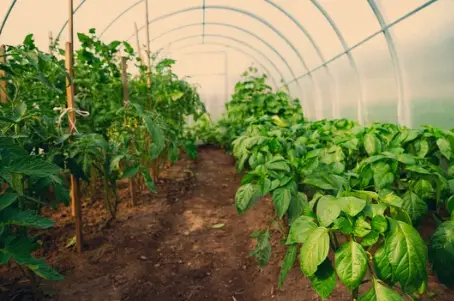Welcome to our comprehensive guide on companion planting, a gardening technique that harnesses the power of plant partnerships to optimize growth, deter pests, and boost yields.
In this blog post, we’ll take an in-depth look at the dynamic duo of tomato and pepper plants as companion plants.
Get ready to discover the secrets behind their symbiotic relationship and how it can benefit your garden, resulting in abundant harvests and healthier plants.
What is Companion Planting?
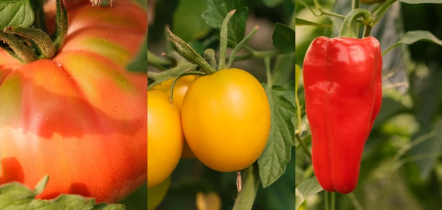
Companion planting is a time-honored practice that involves strategically planting different crops together to promote their mutual growth and well-being.
When selecting compatible companion plants, gardeners can achieve a range of advantages, including enhanced growth, natural pest control, increased yields, and efficient use of space.
The key is to understand the unique characteristics and requirements of each plant to create successful pairings.
Tomato And Pepper Companion Plants
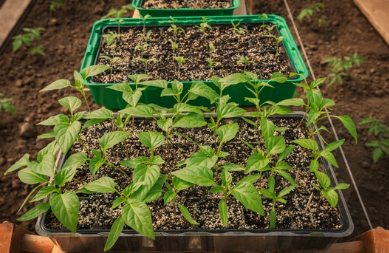
Tomato And Pepper Companion Plants
When it comes to companion planting, tomatoes and peppers make a perfect match.
Both belong to the Solanaceae family, sharing similar growth requirements such as sunlight, soil quality, and watering needs. This compatibility ensures that they thrive together in the same garden bed.
Also, their close proximity offers numerous benefits, including improved pest control, pollination, and nutrient sharing.
Pest Control
One of the remarkable advantages of pairing tomatoes and peppers is their natural pest-deterrent properties.
Both plants contain compounds that repel common garden pests like aphids, whiteflies, and spider mites.
When grown together, their combined aroma and defenses create an environment that makes it challenging for these pests to thrive.
Knowing companion plants, you can further enhance this pest-repelling effect, creating a balanced ecosystem that minimizes the need for chemical interventions.
Pollination
Pollination plays a vital role in the fruit production of tomatoes and peppers.
Fortunately, both plants produce beautiful flowers that attract bees, butterflies, and other beneficial pollinators.
The close proximity of tomato and pepper plants in a companion planting scheme increases the likelihood of successful pollination, resulting in better fruit set and larger yields.
However, it’s important to be mindful of cross-pollination between different tomato and pepper varieties to preserve their distinct traits.
Simple techniques like hand-pollination or physical barriers can prevent unwanted hybridization.
Nutrient Sharing
In companion planting, nutrient exchange between plants is crucial for their overall health and vitality.
Tomatoes and peppers have complementary nutrient requirements, making them ideal partners. Their root systems interact underground, allowing them to share essential nutrients effectively.
For instance, tomatoes have deeper roots and can access nutrients from deeper soil layers, while peppers benefit from the shallow root system of tomatoes, which provides access to surface nutrients.
This nutrient-sharing mechanism fosters stronger and healthier plants, ultimately leading to higher yields.
Companion Planting Strategies
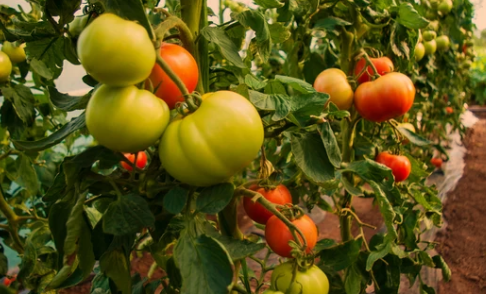
Tomato And Pepper Companion Plants
To implement successful companion planting with tomatoes and peppers, several strategies can be employed.
Interplanting involves mixing these plants together in the same garden bed, allowing them to maximize their mutual benefits.
Successive planting, on the other hand, involves staggering plantings to ensure a continuous harvest throughout the growing season.
Another strategy is border planting, where companion plants are placed around the perimeter of the garden to act as a natural barrier against pests.
Also, incorporating companion plants that provide shade, support, or act as trap crops can further optimize the symbiotic relationship between tomatoes and peppers.
Recommended Tomato-Pepper Companion Plants
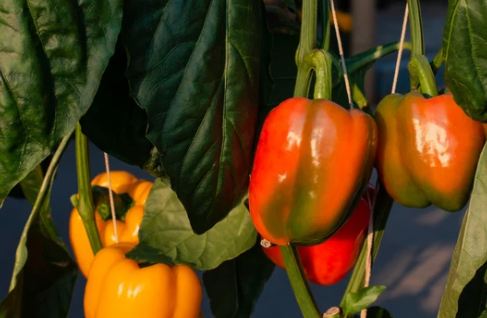
Several companion plants work exceptionally well alongside tomatoes and peppers, enhancing their growth and pest control abilities.
One such plant is basil, which not only improves the flavor of tomatoes and peppers when planted nearby but also acts as a natural pest deterrent.
Marigold, with its vibrant blooms, repels pests and attracts beneficial insects that aid in pollination and pest control.
Nasturtium, a sacrificial plant, diverts pests away from tomatoes and peppers, protecting them from damage.
Borage, with its beautiful blue flowers, enhances pollination and deters pests with its unique scent.
Tips for Successful Companion Planting
To ensure the success of your tomato and pepper companion planting endeavor, there are a few key tips to keep in mind.
Proper spacing and plant placement are essential to avoid overcrowding and allow each plant to receive adequate sunlight and airflow.
Regular monitoring for pest infestations will help you catch any issues early and take appropriate action.
Maintaining soil fertility and moisture levels through organic amendments and proper watering practices is crucial for the health of both plants.
Rotating crops each season helps prevent disease buildup in the soil, ensuring the long-term success of your garden.
Lastly, keeping a garden journal to track your results, make adjustments, and note any observations will provide valuable insights for future seasons.
Conclusion
By embracing the power of companion planting and bringing together the harmonious duo of tomatoes and peppers in your garden, you unlock a world of benefits.
The symbiotic relationship between these plants promotes growth, repels pests naturally, maximizes pollination, and optimizes nutrient sharing.
With careful planning, thoughtful execution, and the inclusion of recommended companion plants, you can create a thriving ecosystem that yields bountiful harvests year after year.
So, why not take advantage of this fantastic partnership and witness the magic of tomato and pepper companion plants in your own garden? Happy companion planting!

